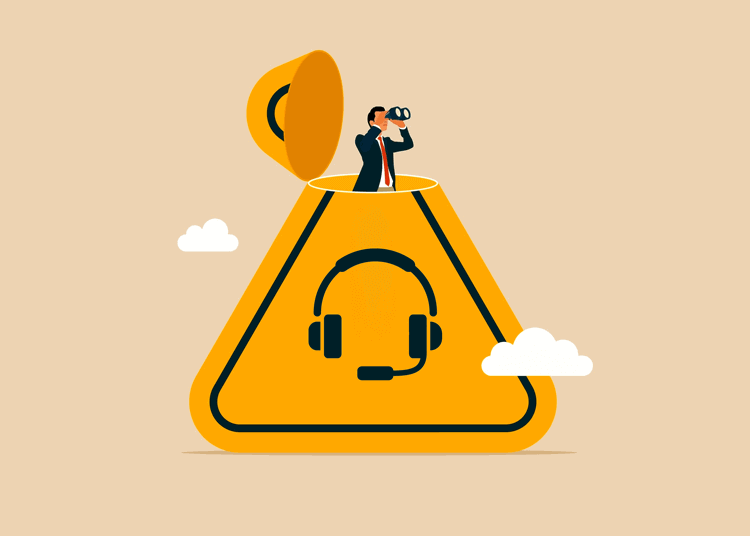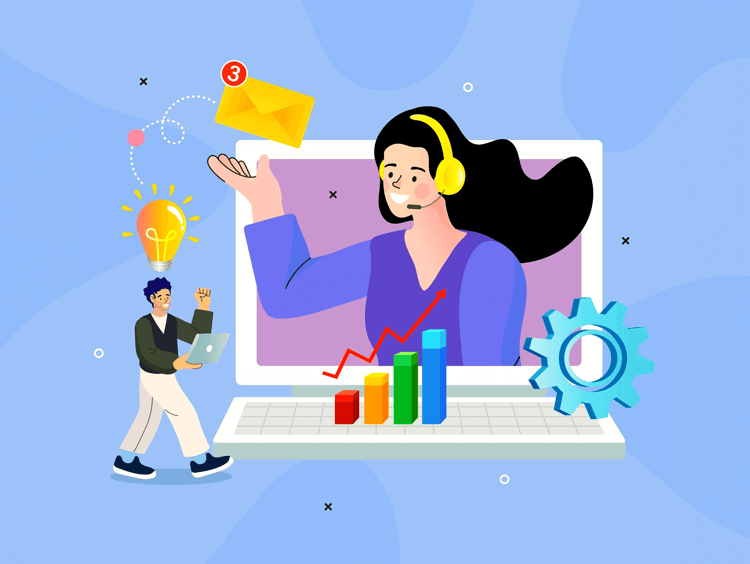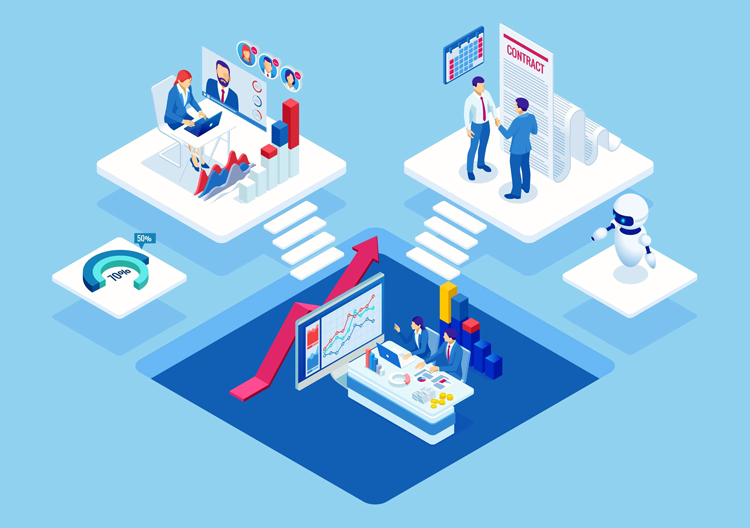20 Top Strategies for Proactive Customer Service Plus Examples
With the speed of information, gone are the days where businesses can wait for problems to arise before addressing them. Proactive customer service shifts the focus from reacting to customer issues to anticipating and resolving them before they occur.
By implementing a proactive approach, companies can increase customer satisfaction, build stronger relationships, and prevent common pain points.
In this article, we briefly discuss the concept of proactive customer service, and then offer 20 effective strategies and examples of how you can apply it to your service and support organizations.

What is Proactive Customer Service?
Proactive customer service is an approach where businesses anticipate customer needs and address potential issues before they arise. This is in contrast to waiting for customers to reach out with problems. It involves taking the initiative in working to prevent problems and in making available to customers helpful resources.
Why Be Proactive in Customer Service
A proactive approach is important and can benefit organizations by:
- Identifying common pain points
- Streamlining support and business processes
- Helping customers feel supported at every step
- Reducing the volume of support requests
- Building a positive, trust-based relationship with customers
Proactive customer service shows customers that the company values their experience and is committed to making interactions smooth and frustration-free.
Watch Our Video On Proactive Customer Service Fully Examined: 20 Strategies for Success
20 Top Ways to Implement Proactive Customer Service
The following are various ideas that can help bring proactive customer service to your support organization. Each lists why the idea is important and gives an example of the implementation:
Tech-Related Proactive Service
-
Automated Alerts for Potential Issues
Use predictive technology to notify customers about potential service issues before they happen.
Why It's Important: Prevents disruptions and boosts customer trust by addressing issues proactively.
Example: Use monitoring tools or machine learning to detect abnormal patterns, and automatically send notifications when issues are detected.
-
Proactive Monitoring of Systems
Monitor customer systems to identify issues before they impact users.
Why It's Important: Ensures high uptime and minimizes customer frustration by catching problems early.
Example: Set up real-time monitoring software and alert your support team when issues arise so they can contact customers directly before problems escalate.
-
Send Maintenance or Upgrade Reminders
Remind customers to perform regular maintenance or software upgrades to avoid future problems.
Why It's Important: Reduces the likelihood of product failures and service interruptions due to neglected upkeep.
Example: Automate email reminders based on customer usage or time intervals to notify them of necessary updates or maintenance.
-
Predictive FAQs
Create FAQs based on common customer behaviors and inquiries to answer questions before they're asked.
Why It's Important: Saves time for both customers and support teams by addressing issues early.
Example: Analyze customer support tickets and common queries, and proactively publish relevant FAQs on your website or knowledge base.
-
Proactive Knowledge Base Expansion
Continuously update the knowledge base with solutions based on recurring or anticipated customer issues.
Why It's Important: Reduces the number of support requests and empowers customers to solve issues on their own.
Example: Use analytics tools to track customer queries and update the knowledge base regularly with helpful content.
-
Provide Product Usage Tutorials
Offer customers tutorials or educational content on how to use your products based on their behavior.
Why It's Important: Helps customers get the most out of your product and reduces frustration from improper usage.
Example: Send personalized emails with video tutorials or how-to guides based on their product usage patterns or onboarding status.
-
Proactive Education on New Features
Inform customers about new product features before they ask about them.
Why It's Important: Keeps customers engaged with your product and maximizes the value they get from updates.
Example: Include new feature announcements in regular newsletters or through in-app notifications, with links to tutorials or guides.
Customer Communication and Engagement
-
Proactive Live Chat
Use behavior-based triggers to initiate chat assistance when customers appear to need help.
Why It's Important: Prevents frustration and improves the customer experience by providing immediate assistance.
Example: Set up live chat software that monitors user activity (e.g., time spent on a page or repeated failed actions) and triggers a chat offer when they may need support.
-
Preemptive Outreach After Purchases
Contact customers post-purchase to confirm their satisfaction and address any potential issues.
Why It's Important: Enhances customer satisfaction and reduces returns or complaints by resolving issues early.
Example: Send automated follow-up emails or make calls a few days after a purchase to check on the product's performance and customer satisfaction.
-
Follow-Up Post-Support Interaction
Check in with customers after resolving their issues to help maintain long-term satisfaction.
Why It's Important: Shows that you care about their experience and allows for early intervention if problems resurface.
Example: Use Customer Relationship Management (CRM) tools to schedule follow-up emails or calls after support interactions, keeping the solution effective.
-
Customer Feedback Follow-Up
Actively reach out to customers who provide feedback (especially neutral or negative) to improve their experience.
Why It's Important: Helps turn negative feedback into positive outcomes and improves overall customer sentiment.
Example: Set up automated alerts for feedback responses and have your team follow up with customers to address concerns or improve their experience.
-
Offer a Consultation or Check-In
Offer periodic consultations or check-ins with key customers to assess their satisfaction and address any potential concerns.
Why It's Important: Builds stronger relationships and shows customers you're invested in their success.
Example: Schedule regular check-in calls or meetings for high-value customers to discuss their needs and offer advice.
-
Anticipate Customer Needs with Analytics
Use customer data and analytics to predict what customers might need before they ask.
Why It's Important: Allows you to address potential issues or offer value before the customer even knows they need it.
Example: Analyze customer behavior, purchase history, and support interactions to predict future needs and offer timely recommendations.
-
Customer Health Score Monitoring
Monitor customer health scores based on metrics like product usage or frequency of support requests to identify at-risk customers.
Why It's Important: Helps you reach out to potentially unhappy customers before they churn.
Example: Use CRM tools to calculate customer health scores and trigger outreach for customers with declining engagement or increasing support requests.
Billing and Renewal Proactivity
-
Outreach for Renewals
Remind customers about upcoming service or contract renewals before they expire.
Why It's Important: Prevents service interruptions and demonstrates proactive customer care.
Example: Set up automated emails or call reminders based on contract expiration dates, providing easy options for renewal.
-
Proactive Problem Resolution
Identify and fix errors (like billing mistakes) before the customer notices and contacts you.
Why It's Important: Prevents frustration and builds trust by showing you're actively monitoring for mistakes.
Example: Implement internal checks and alerts for issues like incorrect billing or system errors, and notify customers with the resolution.
-
Address Potential Billing Confusions
Proactively reach out to explain confusing billing patterns or charges to prevent misunderstandings.
Why It's Important: Reduces complaints and improves transparency with customers regarding their financial relationship with your company.
Example: Flag unusual or complex billing patterns in your CRM software and have customer service reach out to clarify before customers ask.
Loyalty and Value-Added Engagement
-
Loyalty Program Incentives
Surprise loyal customers with unrequested incentives like discounts, gifts, or exclusive insights.
Why It's Important: Increases customer loyalty and engagement by providing unexpected value.
Example: Use customer data to identify loyal customers, and send them personalized offers, discounts, or small gifts periodically to thank them for their business.
-
Offer Seasonal or Event-Based Tips
Send tips or advice relevant to your customers' use of your products or services based on seasonal or event-specific needs.
Why It's Important: Shows your company is paying attention to customer needs and positions you as a helpful resource.
Example: Automate email campaigns or notifications based on customer activity and seasonal trends.
Social Media Monitoring
-
Proactively Monitor Social Media
Use social listening tools to spot potential customer concerns or issues on social media before they escalate.
Why It's Important: Allows for timely responses to issues or complaints that may not have been brought directly to your attention.
Example: Set up social media monitoring tools to track mentions of your brand and keywords related to customer complaints, and have a team ready to respond.
The Role of AI in Proactive Customer Service: Future Trends
Artificial Intelligence (AI) is starting to influence proactive customer service much more, bringing new ways to predict, prevent, and personalize customer experiences. AI-powered tools can analyze vast amounts of data to detect patterns, identify potential issues, and provide timely solutions, often before customers are aware of a problem.
Here are a few examples:
-
Predictive Analytics
By examining historical data, AI systems can forecast potential service issues or product needs. This allows businesses to notify or assist customers proactively.
For example, AI can predict when equipment might need maintenance or when a customer may be due for a product upgrade based on usage patterns.
-
Greater Personalized Customer Interactions
AI is also supporting better personalized customer interactions. It can track individual customer behaviors and preferences, which can help businesses deliver more customized recommendations, relevant content, or even automated assistance.
For instance, Chatbots can initiate conversations when a customer appears to need guidance. This provides real-time support that feels much more personal.
-
Automated Social Listening
AI tools can monitor social media platforms to identify customer complaints, sentiment, or emerging trends. This allows companies to address potential concerns before they escalate, even if the customer hasn't contacted support directly.
Conclusion: Proactive Customer Service for Support Excellence
Proactive customer service strategies help businesses stay one step ahead, bringing smoother, more personalized customer experiences. With these various approaches and newer technologies, being proactive in customer service demonstrates a commitment to anticipating and meeting customer needs.
As customer expectations reach new levels, companies that invest in proactive service will not only reduce issues but also create trust, loyalty, and lasting relationships. Being forward-thinking in these strategies increases customer satisfaction and images the brand as one that offers exceptional service.
Giva Can Help in Your Proactive Customer Service Strategies
Giva's AI Powered Customer Service Software helps you focus on your customers. You can start serving customers quickly, and start resolving issues effortlessly with AI Copilots, automation and smart workflows.
Get Visual Insights with Real-Time Dashboards
Benefits include:
- Improved First-Contact Resolution and Response Times: Customer support agents have instant visibility into open issues, customer histories, previous touchpoints, and all past interactions, empowering fast resolution, resulting in higher first-contact resolutions and shorter response times.
- Increased Customer Satisfaction with Proactive Issue Monitoring: Programmed alerts provide the ability to monitor thresholds and quickly identify emerging trends, allowing teams to proactively address potential bottlenecks or high-volume periods before customer satisfaction is impacted.
- Optimized Agent Performance: With real-time data on agent performance, supervisors can dynamically reassign tasks, adjust staffing, and optimize workflows, ensuring that agents are always focused on priority cases and customers are never left waiting.
Let Giva partner with you in your support goals! Book a free Giva demo to see our solutions in action, or start your own free, 30-day trial today!





